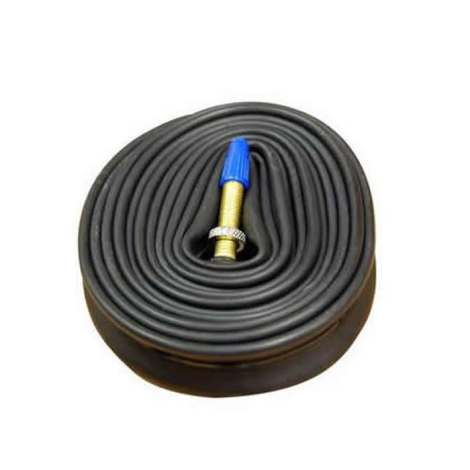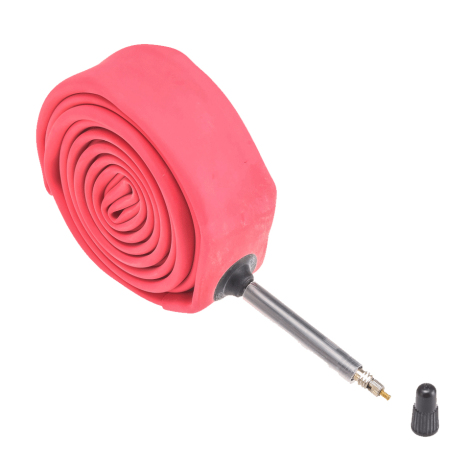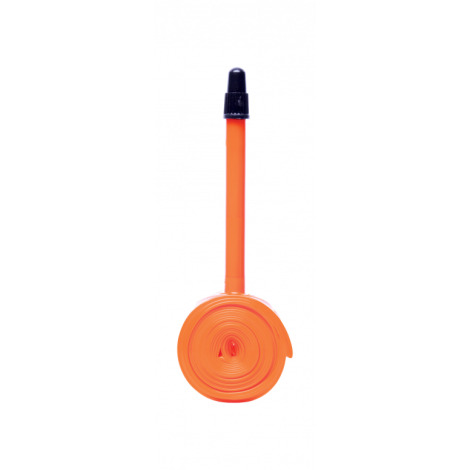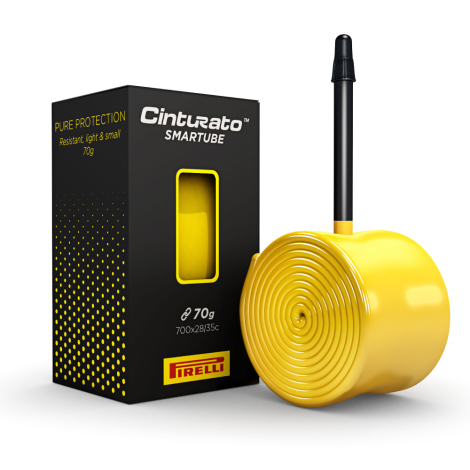While some riders have gone down the tubeless trail (particularly off-road riders), there are also many who don’t want the hassle and faff of setting up tubeless and like the simplicity of inner tubes.
Choices
In recent years a third type of inner tube has become fairly widely available, the TPU (Thermo Plastic) inner tube offers an alternative to standard butyl and latex. So what are the good and bad points for each tube material type?
Butyl
Black butyl inner tubes are the most common tubes, fitted to the vast majority of new bikes. They are relatively easy to patch in the event of a puncture and easy to replace. The butyl rubber material is good at shock absorbing and excellent at holding air. Butyl can be made thicker for more puncture protection or thinner for lighter weight. Butyl tubes can also be pre-filled with sealant which mimics one of the core benefits of tubeless, they ability to self-heal punctures. The downside to butyl is that it is comparatively heavy and not especially good for rolling resistance..
Latex
Latex inner tubes have more stretch and elasticity compared to butyl and offer a reduction in rolling resistance. The ability to give and stretch means that they can resist punctures slightly better than butyl. Latex tubes are similar or slightly lower in terms of weight compared to butyl. The negative aspects of latex are that they are more difficult to patch when punctured and, more importantly they don’t hold air too well compared to butyl.
TPU
New kids on the block, TPU inner tubes, offer some compelling reasons to upgrade. Firstly weight is vastly reduced with TPU tubes – compared to both butyl and latex. Secondly, rolling resistance is also reduced and thirdly, puncture protection is increased compared to the alternatives. TPU inner tubes can be patched with TPU patches, they can be re-cycled at the end of their life and they use less materials in their manufacture. TPU tubes pack up much smaller than butyl and latex tubes – important when carrying a spare. However, there are a couple of down-sides to TPU tubes. Firstly they are more expensive and secondly, fitting them requires a little bit of care, but is a relatively straight forward process.
Performance
On a regular road bike swapping 2 butyl tubes for TPU will typically offer a weight saving of around 150 grams of revolving weight, minus an extra 75 grams if you swap your spare tube too. This is similar to the weight difference between Shimano 105 R7000 and Ultegra R8000 groupsets. Weight reductions increase for bigger gravel / CX and MTB’s inner tubes.
If you are looking for a noticable performance gain and reduction in weight, but don’t want the hassle, frustraion and sore thumbs which often come for free with tubeless, TPU inner tubes are well worth considering.




